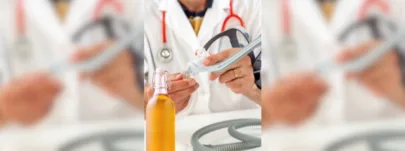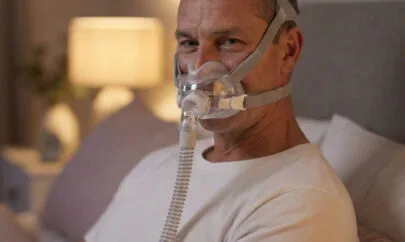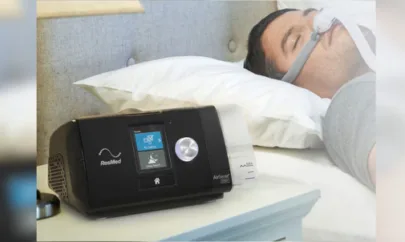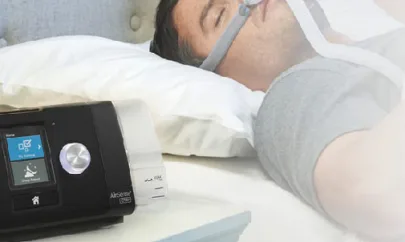
Clean Your CPAP Device with Vinegar in Easy Steps
Positive airway pressure (PAP) therapy is a leading treatment for obstructive sleep apnea. PAP is a device that delivers pressurized air through tubing to a mask worn while you sleep. The pressurized air helps keep the airways open and prevents the breathing pauses that cause frequent awakenings “apneas” while you sleep.
To ensure the treatment’s effectiveness, the PAP components, including the mask, tubing and humidifier need to be regularly cleaned. Ideally, this should be every day, but at the least carried out weekly. In this article, we shall look at how to clean CPAP with vinegar, warm water and a mild soap.
Why You Need To Regularly Clean PAP
Before we look at how to clean PAP, we will first address why regular cleaning is so important. The following are three main reasons why you need to keep your PAP components clean.
- PAP delivers warm moist air to inhale and exhale through a mask worn overnight. These conditions could become the ideal host for microbes, bacteria, viruses and mold unless a sufficient cleaning routine is maintained. Dust particles and other potential allergens can also become trapped. Regular cleaning helps prevent illness and lung infections from a build-up of harmful microbes and allergens.
- Oils from the skin of your face are deposited on the mask cushion. If the mask is not cleaned regularly, the oils can become a breeding ground for bacteria, leading to skin irritation and possible acne as you continue to wear the mask each night.
- Facial oil can also cause a degradation of the material the mask is made from. Indeed, a lack of regular cleaning will contribute to a degradation of your PAP device and components — which will impact on the effectiveness of the treatment in reducing your obstructive sleep apnea symptoms. As well as reducing the lifespan of the device, a lack of proper maintenance could void a manufacturer’s warranty.
Household Items Required
The beauty of PAP is that daily cleaning only takes around five minutes and the cleaning items required are standard household products. All you will need to clean your PAP device are:
- warm, drinking-quality water
- mild liquid soap, preferably one that is not scented
- white vinegar
- a suitable bowl or tub
- a clean non-abrasive towel
Easy Steps for Cleaning a PAP Device
Cleaning a PAP is a straightforward task and one that should become second nature. Before you start disassembling the parts, always double-check that the device is unplugged. The manufacturer’s guide that accompanies the device can show you how to safely disassemble the device if it contains an integrated battery.
Tubing
The whole of the tubing is placed in a tub of warm, soapy water. Rinse inside and outside of the tubing with soapy water to ensure it is thoroughly cleaned. This can be done by submerging it for a duration where you can see the whole tubing length is filled. Finally, rinse the tubing out with warm water and place to one side on a towel to dry.
One quick aside concerns heated tubing. If your PAP device has heated tubing, check the manufacturer’s guide for best practices on how to clean it as they can contain electrical components.
Mask
The mask needs to be split into its three components, which are the frame, cushion and headgear. Each part needs to be gently rubbed using soapy water to remove any oils. Even if you only clean the frame and headgear every week, it is a good idea to clean the cushion every day since it is the part that rests against the skin each night.
As with the tubing, the mask components need to be rinsed off in warm water and then left to dry on a towel, away from direct sunlight.
Humidifier
The white vinegar comes into play for cleaning the humidifier tub. Once the humidifier has been removed from the CPAP device, it can be emptied and wiped with a clean disposable cloth. At least once a week the humidifier tub should be filled with a solution made up of one part white vinegar to nine parts room-temperature water.
Leave the solution to soak in the humidifier tub. This can be the time to clean the other PAP components. Finally, rinse thoroughly with warm water and leave to dry on a towel placed on a flat surface, again out of the reach of any direct sunlight.
Reassemble Parts
All the parts should be left to air dry on a clean, non-abrasive towel, away from direct sunlight. Your routine may be to wash your PAP device in the morning before work and let it dry through the day. Once all the components are completely dry they can be reassembled for use again that night.
Products to Avoid
Warm, soapy water is ideal for cleaning PAP equipment as it removes the risk of products and solutions that could damage PAP masks and tubing and also be harmful when inhaled. The following items may seem like good cleaning options but should be avoided.
- bleach
- alcohol
- scented oils
- antibacterial soaps
- dish detergent, however mild
Avoid the temptation to place your PAP parts in a washing machine or dryer too. Cleaning a PAP device by hand in a tub or bucket only takes around five minutes and is the best way to maintain hygienic obstructive sleep apnea treatment using PAP and to extend the life of the device.
Parts Will Need Replacing
Regularly cleaning your PAP device allows you to spot issues with the components. Masks, tubing and filters will all need replacing regularly and you should refer to the manufacturer’s guidelines to see how often this is for your PAP device.
Final Thoughts
These simple steps illustrate how to clean PAP with vinegar, warm water and mild soap. For just five minutes of your time each day, you can help keep your PAP equipment clean of the bacteria, dirt and allergens that could otherwise make you ill or irritate the skin.
Sources:
https://www.sleepfoundation.org/cpap/how-to-clean-a-cpap-machine
https://www.resmed.com/en-us/sleep-apnea/cpap-parts-support/cleaning-cpap-equipment/








